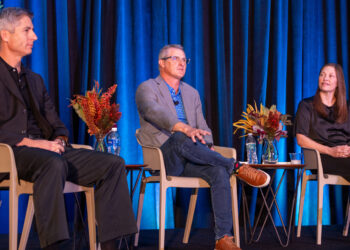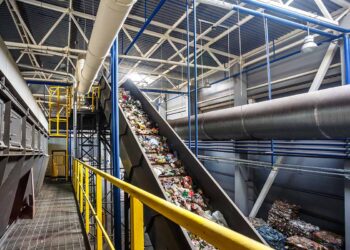Starting an in-house environmental, social and governance reporting program is a natural move for ITAD companies to make – indeed, in some ways it involves simply communicating the work these companies are already doing to meet industry certification standards and best practices.
That was a theme of a session at the ISRI2024 conference in Las Vegas last month, where speakers from three major IT asset disposition firms shared their experiences starting up ESG reporting programs. ISRI rebranded as the Recycled Materials Association, ReMA, at the end of the show.
Speakers laid out what exactly is involved in ESG reporting, and offered some tips for ITAD firms looking to enter this space.
“You don’t have to reinvent the wheel,” said Amanda Tischer Buros, director of OEM solutions at Wisconsin-headquartered Dynamic Lifecycle Innovations. “You’re probably doing a lot of these things already.”
Buros explained ITAD companies often support social programs in the communities they operate. They often have environmental initiatives. They have established labor standards and hiring practices. And they have been responsibly managing IT assets for years. Companies are especially likely to be doing these activities already if they are certified to R2, e-Stewards or RIOS standards.
“All of these things already exist within our organizations, it’s just about identifying them and then bringing them in and underneath that framework, to be able to tell and report that story,” Buros said, referring to the framework of ESG.
The speakers advised any company looking to start ESG reporting to first take stock of what exactly the company wants to focus on in its reporting. That will guide the data that’s collected and how it’s shared.
After Canadian ITAD firms Shift Recycling and GEEP merged in 2019, the leadership of newly formed Quantum Lifecycle Partners took stock of what was important to the company, and they identified three key stakeholders for Quantum, said Stephanie McLarty, head of sustainability for Quantum: The planet, the company’s workforce and its customers. That kicked off an entrance into ESG reporting, which was formalized with a “materiality assessment” two and a half years ago.
That assessment, carried out by consulting firm Sustainability Leadership, helped the company determine what is significant to the business, said McLarty, and it resulted in a list of 10 main topics to focus on, set goals against and measure annually. Those topics, housed under the three categories of planet, customer and team, formed the basis for Quantum’s annual impact report.
These topics include emissions, which the company measures in terms of direct, or scope 1, emissions, and indirect, or scope 2, emissions; gender diversity in employment and leadership, which the company reports as a ratio of male to female and by leadership level; worker participation in health and safety committees, measured as hourly involvement in committee meetings; and other metrics.
At Dynamic, which deepened its move into the ESG reporting space last year, the work similarly began with a third-party materiality assessment, Buros said, which helped identify core priorities for the company. The company looked at how it compares with peer and competitor companies and looked at its largest customers and the needs or issues impacting those firms. That process resulted in a list of 15 areas of focus that were placed into categories, which the company prioritized based on importance to customers, timeframe for implementation and other factors.
Those priority areas were identified as recycling and reuse; hazardous materials management; workforce health and safety; supply chain management practices; and data security. These priorities help the company craft its annual ESG report.
One recent entrant into the ITAD ESG reporting space is New York-based Sunnking Sustainable Solutions, which rebranded in April to reflect this focus. Kali Smith, director of sustainability at Sunnking, explained the company did its own in-house materiality assessment to get started.
“We took into consideration what clients were starting to ask us through surveys,” she said. Those were combined with an internal assessment of what was important to company leaders. Smith emphasized the importance of buy-in from a company’s senior leadership, because that will set the tone throughout the business.
“Getting your entire team on board can be difficult,” she said, explaining that sometimes when topics like emissions come up, “some people just will shut you right out.” Companies can counter that by highlighting the value ESG reporting creates for the company, but the attitude really needs to come from the top, Smith said. At Sunnking, leadership support was a big driver of the company’s push into the ESG space.
“If you don’t have that support, it’s going to be very difficult to get your team involved,” Smith said. Sunnking is gearing up to release its first ESG report.
Speakers noted the materiality assessment can be a daunting process, but that ITAD firms can now benefit from ReMA’s recently launched ESG toolkit, which walks companies through the process of carrying out such an assessment.
“Those tools and that extra help is really going to be what helps any of you that are just starting that journey right now kind of take that leap and get going,” Buros said. “For those of us that started this a while ago, it was definitely kind of like wandering around in the dark.”


























